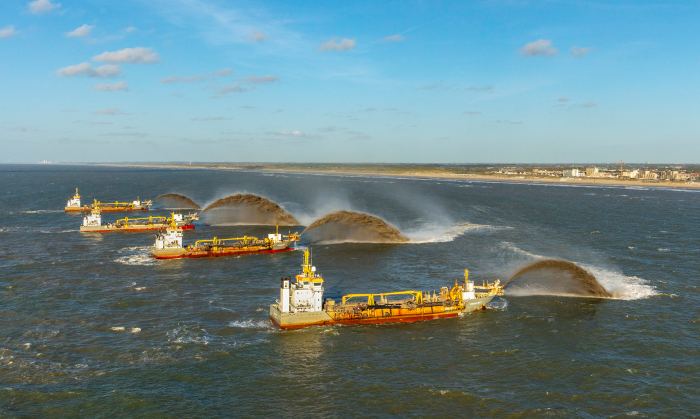Three installation seasons, each with its own story. That, in a nutshell, has been the Changfang & Xidao offshore wind project for Boskalis. The COVID-19 pandemic certainly slowed down the start, in season two our newly commissioned crane vessel Bokalift 2 came in for her maiden project and in the third and final installation season Boskalis showed that with accurate, quick, safe and efficient work everything is possible. “After this project, I now have even more faith in the strength of Boskalis,” says project engineer Chih-Gang Hsu.
When the contract was signed, the plan for the three-year Changfang & Xidao project was crystal-clear: well before the start, Boskalis’ Bokalift 2 would be modified to make it one of the most complete crane vessels in the world, after which it would install the 48 pin piles and sixteen associated jackets during the first installation season. The next season, the remaining 138 pin piles would be installed, followed by the ‘grande finale’ in the third season: the positioning of the 46 remaining jackets, plus the associated cleaning and grouting work.
On paper, it was picture perfect. But even before the ink on the contract was dry, COVID-19 threw a spanner in the works. Mobilizing colleagues to Taiwan became incredibly difficult because of all the restrictions imposed by the virus. In addition, due to the pandemic, the construction of the new crane vessel Bokalift 2 was delayed for a long time, and so the Bokalift 1 had to be mobilized in a hurry for the first installation campaign “Because time for preparation was so short, it was difficult to get a good installation rhythm,” says Hsu. “Unfortunately, when we started to pick up the pace, the weather deteriorated in Taiwan.”
The valuable lessons we learned were included in the plan for the third and final season
During the second installation season, it wasn’t easy to catch up either. “With our brand new Bokalift 2– outfitted with new installation equipment – and a new crew, we basically started from scratch all over again. On top of that, we had a large number of typhoons that delayed the work for a while,” says project director Edward Meevers Scholte. “The valuable lessons we learned were included in the plan for the third and final season.”
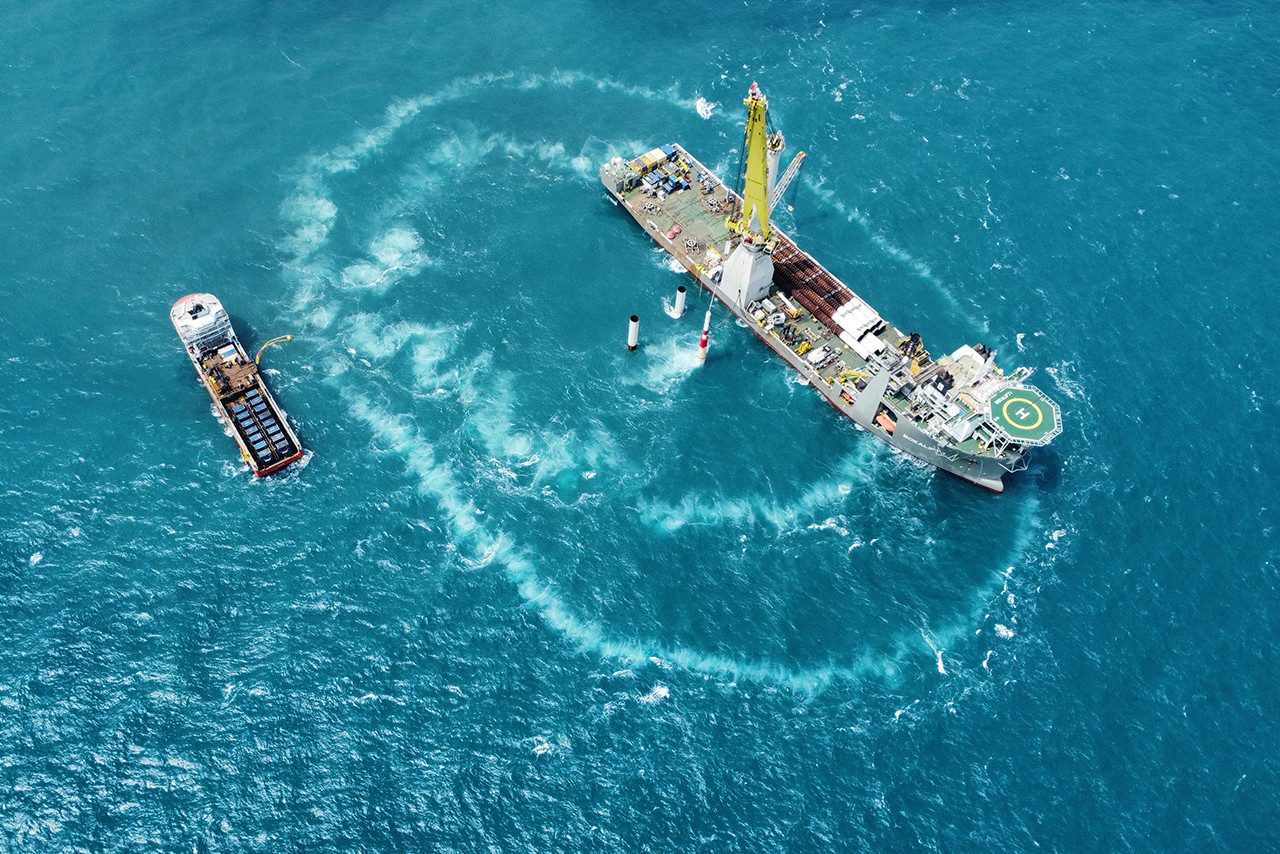
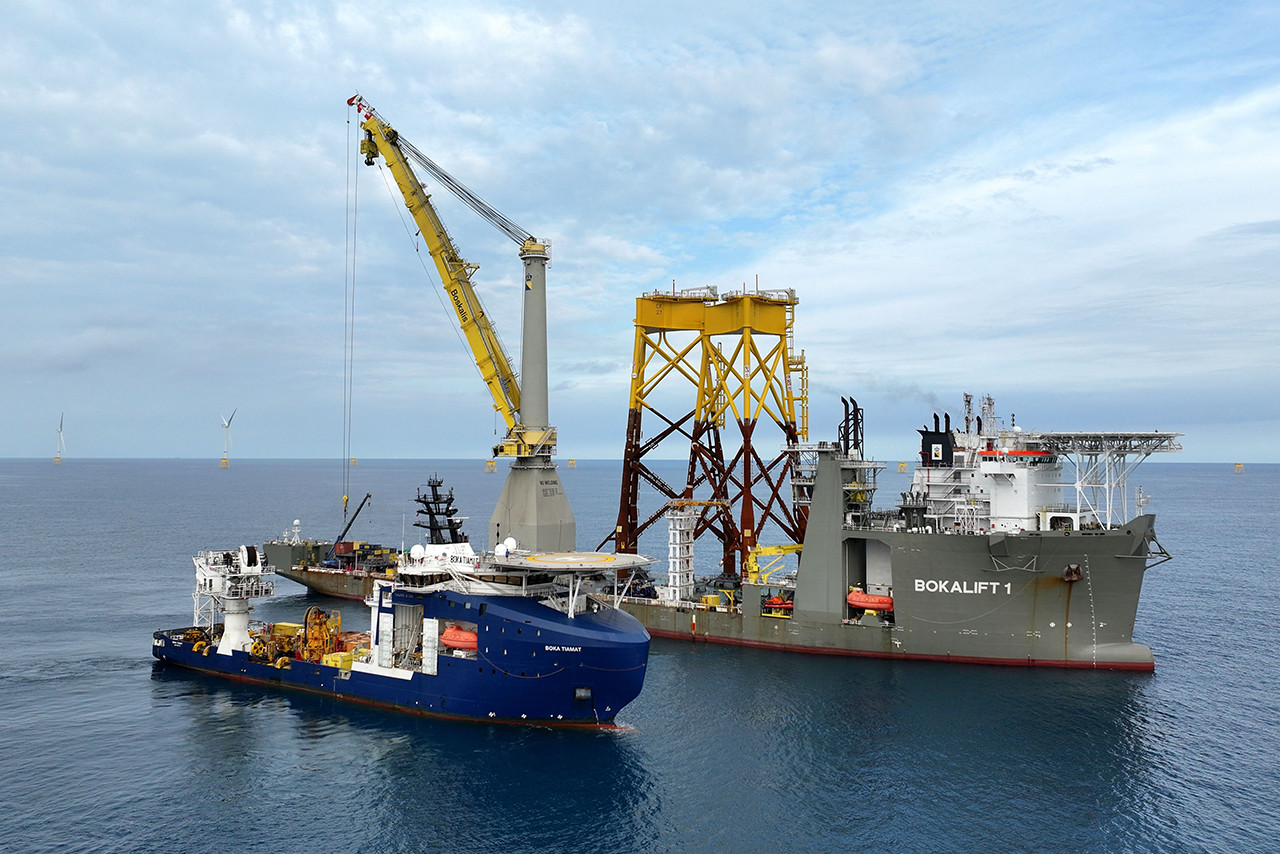
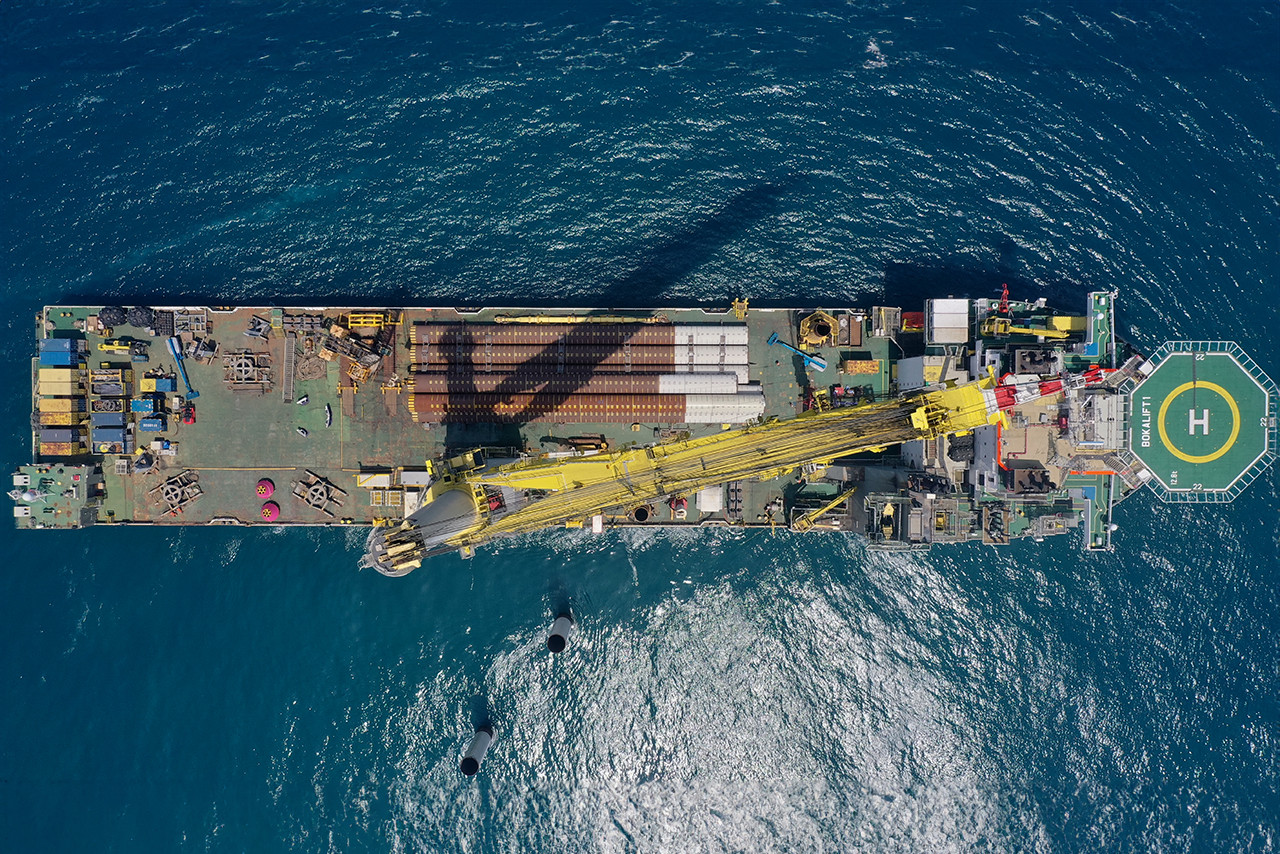
Feeder concept
In response to a request from the client, Boskalis also got involved in the development of a ‘feeder concept’ for the Bokalift 1, which had returned for the final installation season. “The idea was that using a heavy-transport vessel to deliver jackets from the port of Taipei to the offshore wind farm would allow the Bokalift 1 to work on the installation without interruption,” says Meevers Scholte. So Boskalis’ Mighty Servant 3 was mobilized to sail with four jackets on deck to the Bokalift 1, which picked them up offshore with the crane and installed them immediately. In addition, Boskalis’ Construction Support Vessels (CSVs) BOKA Atlantic and BOKA Tiamat were used for grouting and cleaning work, and installing the transition piece covers on the jackets.
“In today’s market, there is a lot of demand for strong CSVs. So the large Boskalis fleet was a major benefit for us,” says Meevers Scholte. “With this ‘feeder concept’, the two CSVs, and the fact that we used our working experience in Taiwan we were able to make up a lot of the time lost in the first two years. As always, the initial installation operations in a new season are the most challenging: you have to find an approach that works best with the entire crew. Because we got started early in the final installation season, we soon got the approach right.”
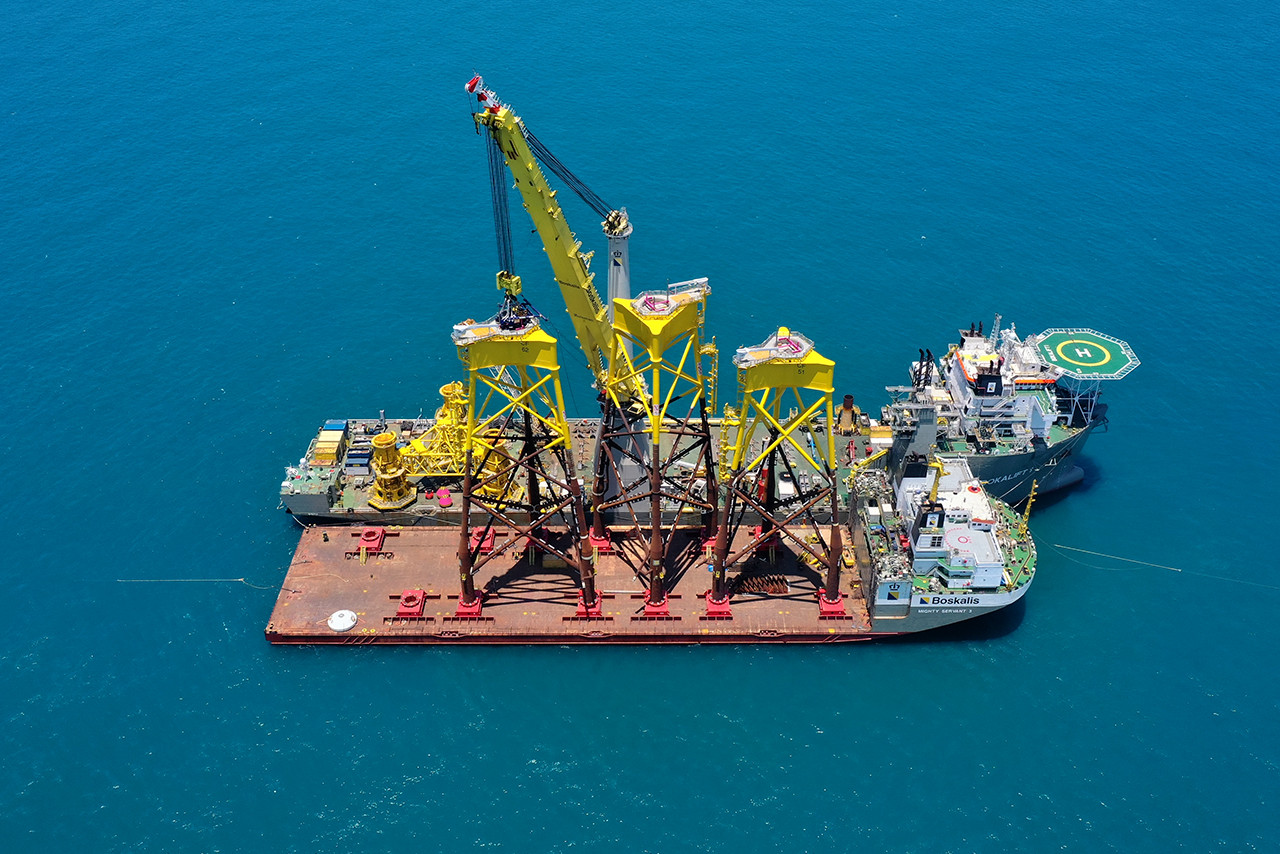
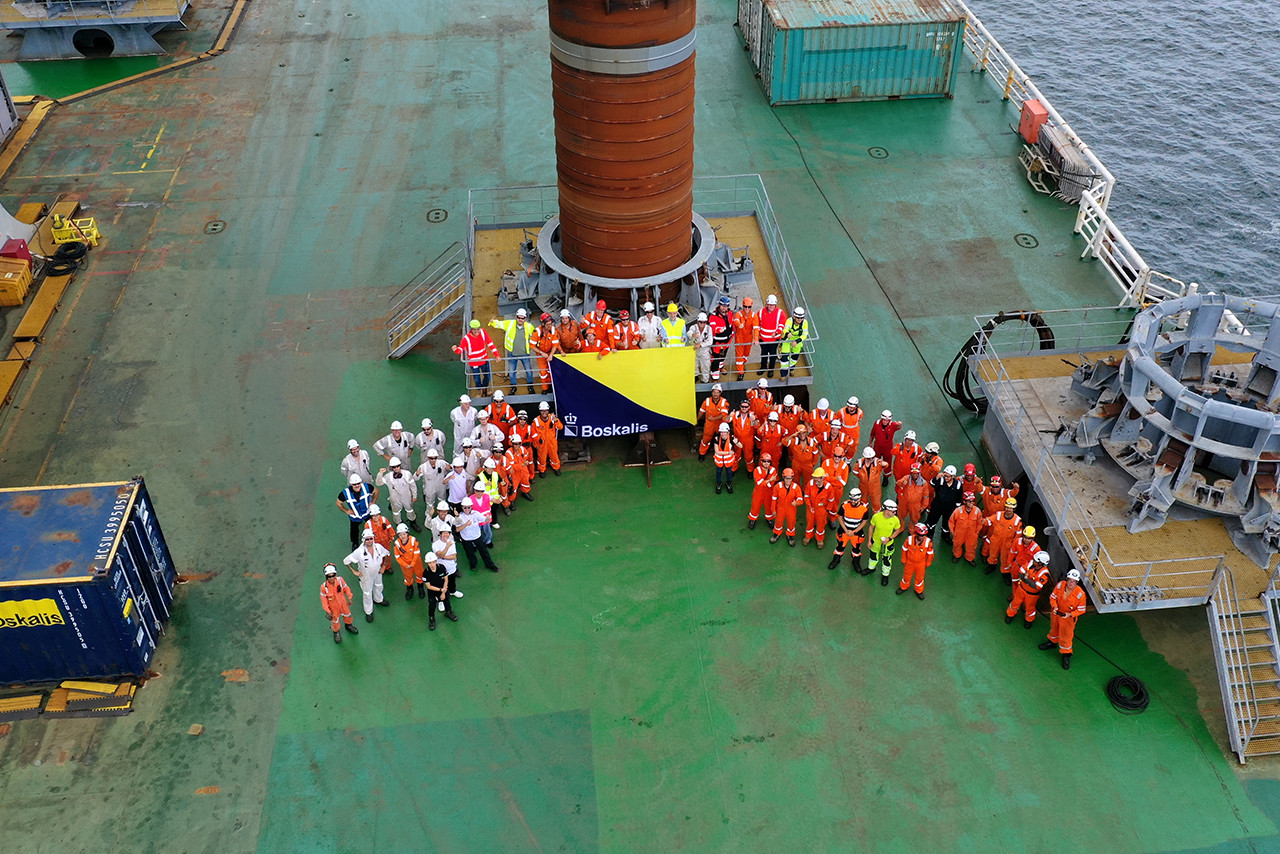
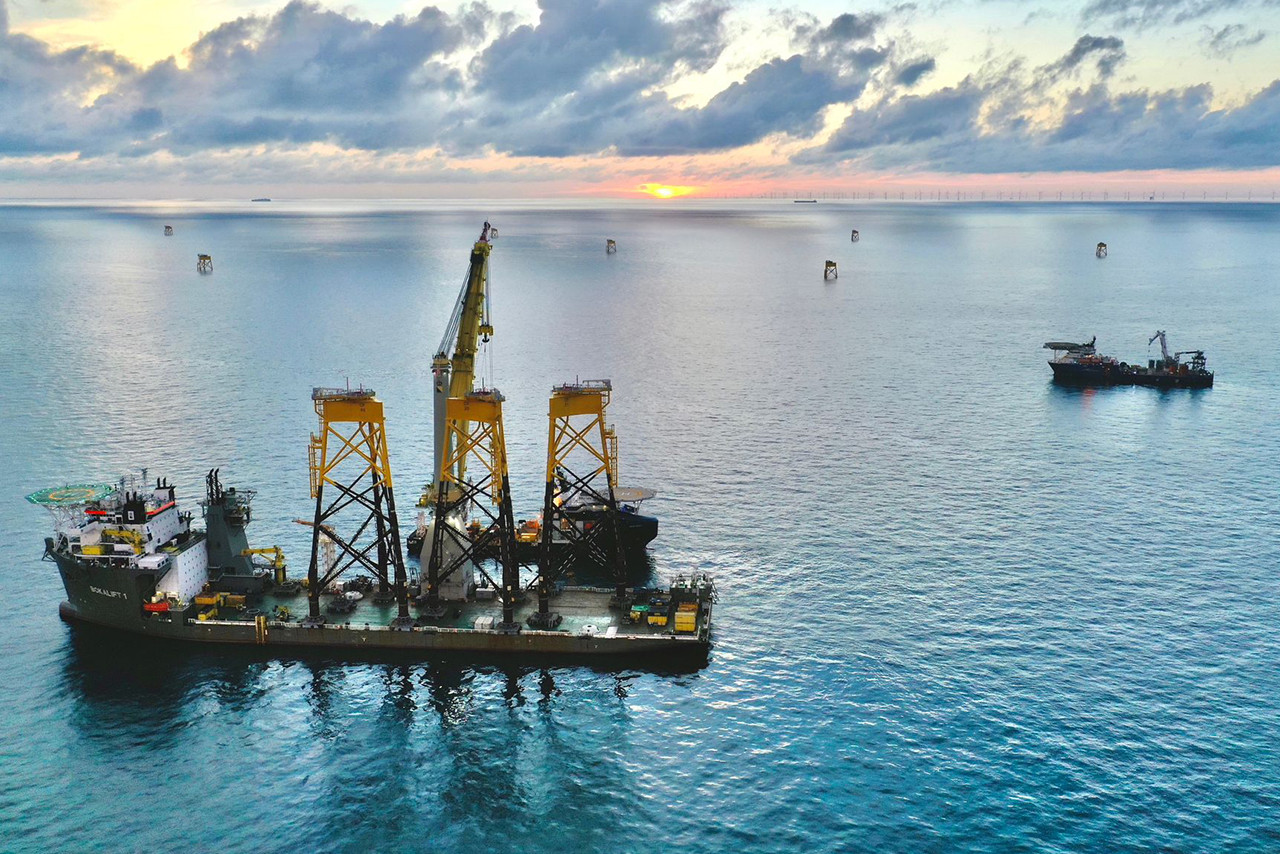
Tremendous pace
And so this spring, the remaining pin piles of the total number of 186 for the Changfang & Xidao offshore wind farm were installed quickly in the seabed. Meevers Scholte: “The Bokalift 1 worked at a tremendous pace. We completed the pin pile campaign in May, equipped the Bokalift 1 with specific tools for the jacket installation and started with the installation of the remaining jackets. With good weather and a highly motivated crew and project team, we installed one jacket after another. We were back in Taipei every three days to pick up another four jackets. As we worked closely with the client and supplier, and our own team, the delivery of jackets to the Bokalift 1 went very smoothly and we were able to complete the project well ahead of the deadline.”
You can now see the impact the Changfang & Xidao project has had on Taiwan
Impact on Taiwan
With the 62 foundations for the offshore wind farm, the past three years have literally produced a new horizon for Taiwan. Hsu, along with several other Taiwanese colleagues, has been involved in the project since the preparation phase. “The other day, I took a look at the photo album on my phone and saw the pictures of the Bokalift 2 when it was still a drilling vessel. A lot has changed since then: the Bokalift 2 has already finished its second project with all kinds of new tools. The yard in Taipei was still virtually vacant. It wasn’t ready for the many developments in the offshore wind industry; these days, there’s a factory in Taipei port that makes large foundations for offshore wind turbines. You can now see the impact the Changfang & Xidao project has had on Taiwan. Having been a part of that makes me enormously proud as a native of Taiwan.”
